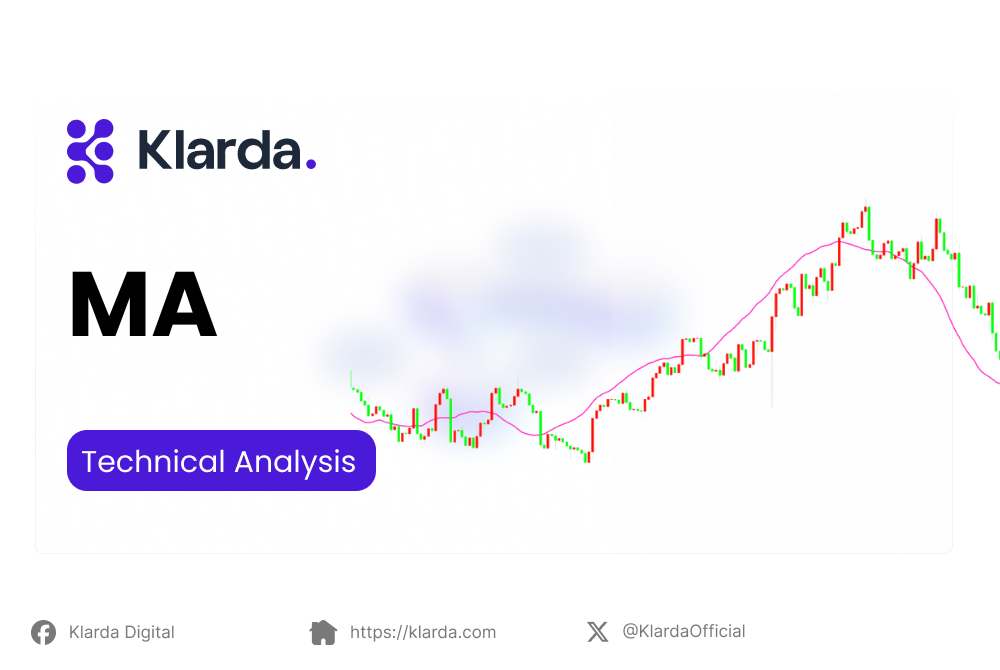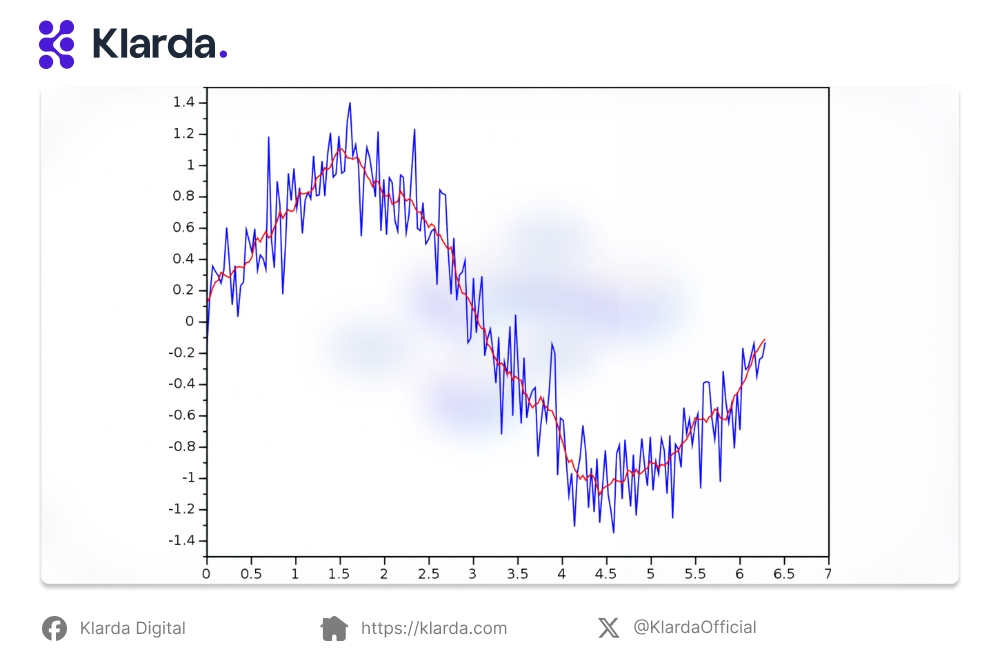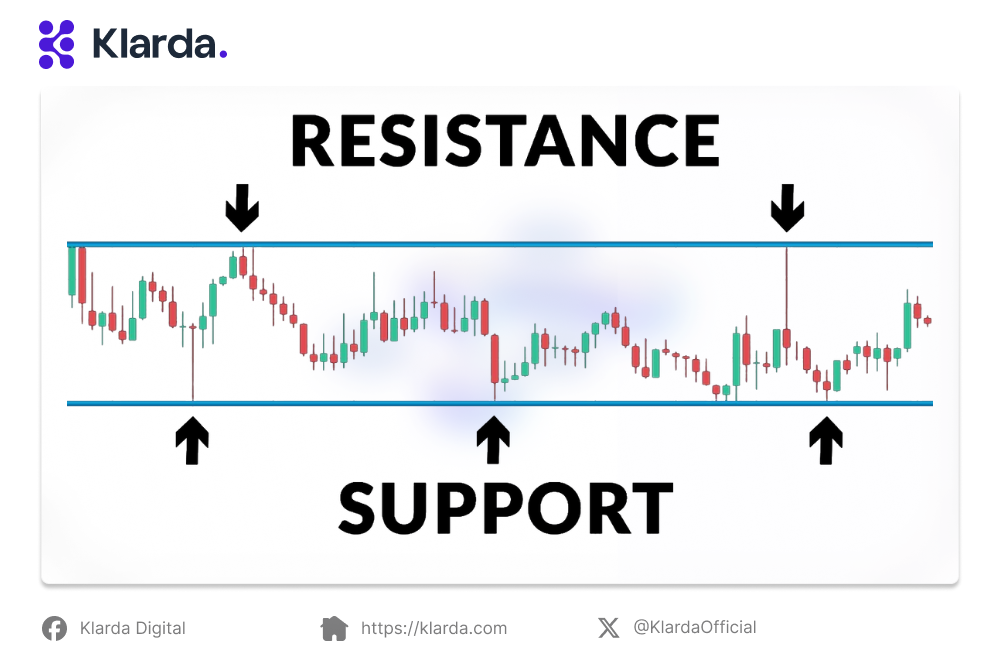Moving Average
Moving average is a popular tool in the financial market. So, what is a moving average? Let's explore it in the following article.
Technical analysis is a widely used approach by many investors. One highly popular method in technical analysis is using Moving Average (MA) lines. So, what is a Moving Average (MA) line? How to apply Moving Average effectively? Let's explore them in the following article.

KEY TAKEAWAYS
- Moving Average (MA), also known as the moving mean, is a line connecting the average closing prices over N predetermined periods of a product, with N chosen in advance.
- The moving average serves two primary purposes: identifying market conditions and determining entry and exit points for trades.
- Moving averages come in two main types: the Simple Moving Average (SMA) and the Exponential Moving Average (EMA).
- A moving average trading strategy is a commonly used technical analysis approach that leverages the moving average (MA) of a security's price to recognize potential market trends.
WHAT IS MOVING AVERAGE?
Moving Average (MA) connects average closing prices over a set period (N) and helps smooth out price fluctuations for better trend observation. A smoother MA reacts slower to changes, while a more fluctuating one responds quickly. Adjusting N allows customization for smoother or more responsive averages.

The Moving Average is one of the most commonly used technical indicators in the financial market.
HOW DOES A MOVING AVERAGE WORK?
The Moving Average (MA) stands as a widely employed indicator in Technical Analysis, leveraging past prices to achieve two primary objectives:
- Identifying market conditions.
- Guiding entry and exit points for trades.
- Represented as a line on the chart, the MA reflects the average price of a security over a specified number of time periods, typically based on closing prices. This provides a valuable tool for traders to assess market trends and make informed decisions.
TYPES OF MOVING AVERAGE
Simple Moving Average (SMA)
The Simple Moving Average (SMA) is a popular technical indicator that computes the average of a set of prices over a defined time period. It creates a smoothed line, effectively highlighting trends while minimizing the impact of short-term price fluctuations.
Exponential Moving Average (EMA)
The Exponential Moving Average (EMA) stands out as a weighted moving average that assigns greater importance to recent prices over older ones. This responsiveness to market changes makes it a valuable trend indicator, especially for short-term trend analysis and identifying potential reversals in financial markets.
HOW TO CALCULATE A MOVING AVERAGE?
There are different ways for calculating moving average formula based on their types:
Simple Moving Average formula
The Simple Moving Average (SMA) stands out as the most fundamental and commonly used type, calculated by determining the arithmetic mean of a set of prices or data points over a predetermined period.
The Simple Moving Average (SMA) formula is calculated by adding the closing prices of an asset over a given period of time and then dividing the sum by the number of time periods (or data points).
The SMA provides equal weight to each price point, smoothing out fluctuations to reveal the underlying trend. Yet, its responsiveness is hindered by a delay in reacting to recent shifts in price, rendering it relatively sluggish.
Exponential Moving Average formula
The Exponential Moving Average is a more advanced type that gives more weight to recent price data, providing a more responsive indicator.
The Exponential Moving Average (EMA) is calculated using the formula: EMA = Closing price multiplier + EMA (previous day) (1 - multiplier), where the multiplier is determined by the formula 2 / (number of observations + 1).
The EMA reacts more quickly to recent price changes, offering a faster signal for potential trend reversals or continuations. However, it may lead to more false signals compared to the SMA.
MOVING AVERAGE TRADING STRATEGY
A moving average trading strategy is a popular method in technical analysis that leverages the moving average (MA) of a security's price to identify potential market trends. Calculating the average price over a specified period, the moving average helps smooth out fluctuations, aiding traders in discerning trends and assessing market sentiment.
- Choosing the right time frame
Moving averages, displayed as lines on most trading platforms, such as the 20-day moving average shown as a blue line in the chart below, offer flexibility in time frames or "look-back" periods. Ranging from a few hours to several months, shorter timeframes increase sensitivity to price movements, while longer ones provide a smoother trend indication.
- Identifying a trend
Moving averages are commonly employed to identify price trends. When the price surpasses the moving average, it signals a potential uptrend; conversely, a movement below the moving average may indicate a potential downtrend. Additionally, the slope of the moving average offers insights into the momentum of the trend.
- Determining support and resistance
Moving averages serve as flexible points of support and resistance, adapting to the ever-changing market conditions. In an uptrend, they facilitate upward movement, whereas in a downtrend, they act as a barrier, prompting price reversals. Traders utilize this characteristic to pinpoint entry and exit points, establish stop-losses, and define take-profit orders. Conventional stop-losses don't shield against slippage, and opting for a guaranteed stop loss involves a fee.

While using moving averages, it's crucial to combine them with updated information for accurate investment decisions. In such cases, you might find Klarda appealing.
Klarda Marketplace, a feature of Klarda, offers users a comprehensive and continuously updated view of the cryptocurrency market. It's the place to find exactly what you need for efficient trading. Beyond price charts and market news, Klarda provides essential resources for fundamental and technical analysis, along with accurate trading signals for traders.
And that concludes our information on the moving average. We hope this information proves genuinely helpful and aids you in making accurate decisions. However, we'd like to emphasize that this article is shared for informational purposes only. We won't be responsible for any investments made based on this article.
Updated 7 months ago